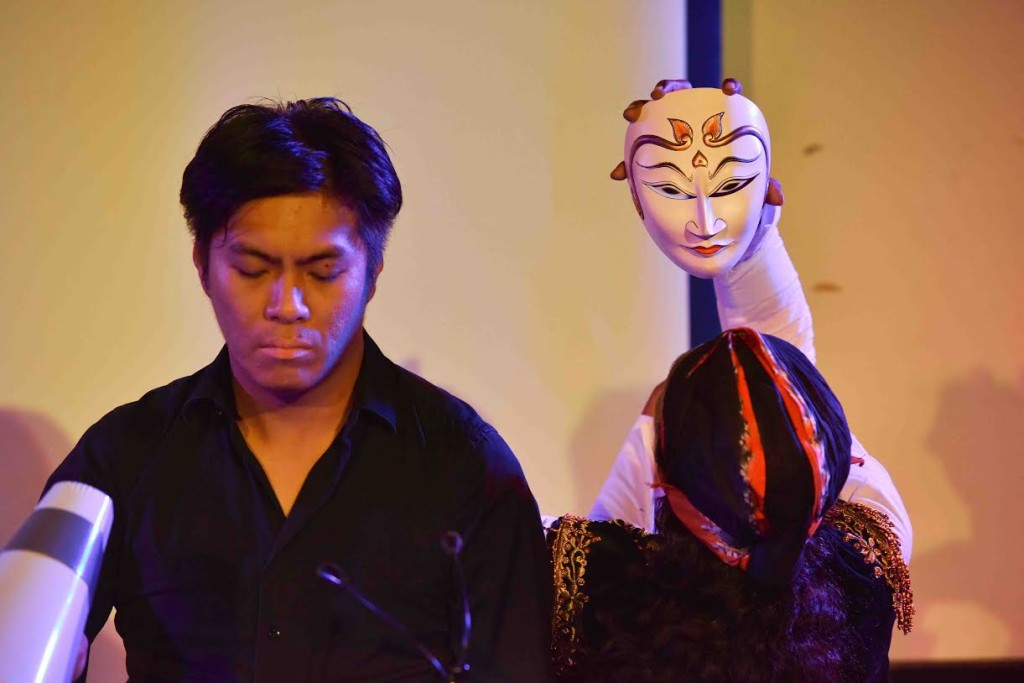- Views3468
- Likes1
Soundbridge II
The Society of Malaysian Contemporary Composers
30 October 2015
DKFEM1, Universiti Putra Malaysia
REVIEW BY ANONYMOUS
Contemporary classical music has a reputation for being difficult; the Society of Malaysian Contemporary Composers (SMCC) challenges this notion through their tireless efforts, albeit with mixed results. Soundbridge 2015 is a contemporary classical music festival organized by the SMCC and their co-organizers Universiti Putra Malaysia (UPM) and Studio C; the festival is comprised of an adequately varied program of three open rehearsals, three concerts and a discussion session featuring panelists of diverse artistic professions.
The musicians, composers and artists present at this festival are established and well-known figures locally and abroad. Malaysian participants include active figures in the local music scene, such as saxophonist Yong Yandsen, vocalist Kok Siew Wai, and electronic musician Goh Lee Kwang; the festival was also graced with the participation of Indian classical dance master Ramli Ibrahim, and, in the vein of Asian classical arts, Chinese calligrapher Pang Heng Khan. Foreign participating artists hail from as far as New York City in the form of Sirius Quartet, an exciting, multicultural (Malaysian, German, American) strings ensemble dealing exclusively in the avant-garde. Other exciting names – from closer to home – are Javanese dancer Agung Gunawan, Thai traditional/live electronics performer Pradit Saengkrai of Thailand, flautist Daisuke Kino-Shita from Japan, and the ASEAN Contemporary Music Ensemble.
The concert Soundbridge II premiers the new works of eight young composers from the Southeast Asian region, featuring not simply music but also the integration of art forms such as Chinese calligraphy and traditional dance of the Southeast Asian region into the concert. The featured composers are young and vibrant minds interacting and experimenting with grafting these other art forms onto music to present new and exciting showcases of their music compositions. However, this grafting should not be confused with multidisciplinary art, or indeed even collaborative art, as Soundbridge II remains first and foremost a music concert; the other art forms simply appear to be supplementary to the showcase of these new compositions.
The first half of the concert opens with a piece by the youngest participating composer of the festival, Vanessa Choke Yuan Teng, a student of music at the Malaysia Institute of Art, whose composition for guqin, percussion and strings, titled ‘Where shall our people go?’, settles the concert and its audience into a grave, anxious mood. Indeed, the rest of the first half – with the exception of ‘In Mood and Motion’, a relatively light-hearted (but no less dissonant), rhythm-driven composition by Singaporean composer Syafiqah Adha Sallehin – adheres to a similar soundscape, in which disquiet and atonal melancholy dominate. In Thai composer Thatchatham Silsupan’s piece, ‘d monument’, the performance is accompanied with live analog visuals: the looping footage of scenery outside of what is presumably a train offers a dimming complement to the composition’s fragmentary sounds.
One returns to the hall to a second half in which exciting ideas such as attaching a camera to an ink brush can enmesh the audience, via live camera feed, with the creative process: the audience is at once spectator and ink brush. The music, in its dissonance, conveys tensions within the act of meaning-making and successfully augments a sense of disorientation in the multiple paths composed by Lee Chie Tsang (Malaysia). The pieces subsequent to this explore equally interesting ideas. Malaysian composer Sayyid Shafiee examines dimensions and the ‘unbalance’ of structures, inspired by early 20th century architecture, specifically Casa Mila by Gaudí.

The concert ends with two pieces that share an integration of minimal dance into each performance. Gatot Danar Sulistiyanto of Indonesia delves into the concept of text as music, with Javanese dancer Agung Gunawan offering dance as supplement [pictured above]. Malaysian composer Tee Xiao Xi also enters composition from the starting point of text: her inspiration is derived from a quote by Jiang Xun, a Chinese writer, and explores the idea of silence, supported by classical dance master Ramli Ibrahim. The former seems to be a more successful interrogation of text, sounds and music, while Tee’s piece offers a cloudy, romanticized impression of silence via a rather predictable Orientalist vein in the music and a seemingly turbulent ‘path’ taken by the dancer.
The concert ends on a cheery note: composers, musicians and all get on stage for a group picture. The efforts of the SMCC cannot be undermined by the inaccessibility of the venue and a heavy sense of intellectualism that may be off-putting to lay folk in the audience; ‘Soundbridge 2015’ is a modest success in that it works towards fostering a sense of community, though insulated in nature, among the professional musicians of Malaysia and abroad. One can only hope that, in time, the music of the present era can be made more accessible not only to musicians and students of music, but also to the general public.
All photos by Dev Lee, courtesy of SMCC.
